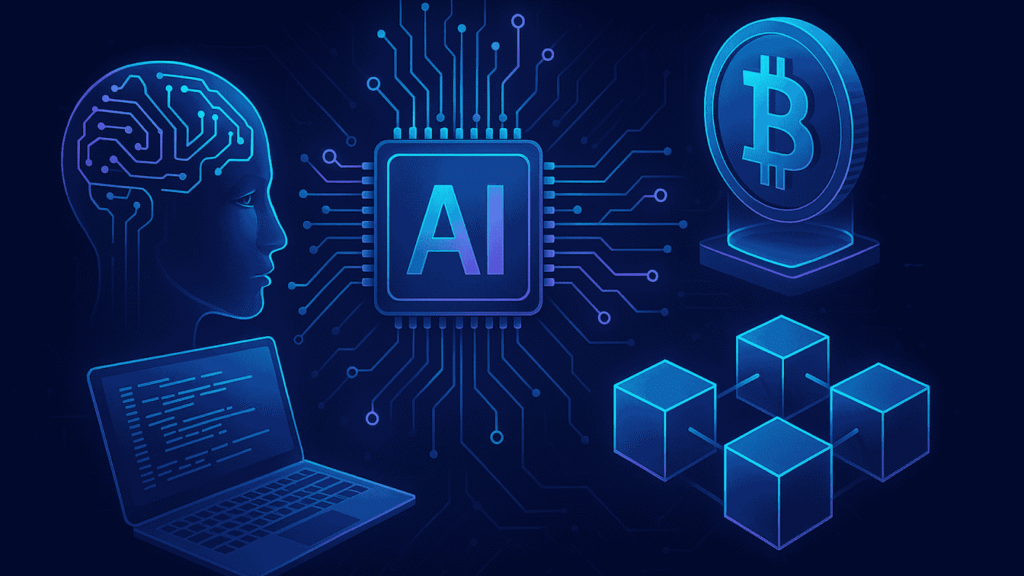Artificial Intelligence and blockchain have long been considered two of the most disruptive technologies of the 21st century. In 2025, their convergence is no longer speculative—it’s driving real-world use cases across finance, gaming, infrastructure, and decentralized computing. With billions of dollars flowing into AI-crypto startups and tokenized protocols building machine-learning capabilities into decentralized apps, a new frontier is taking shape.
As we enter the final stretch of 2025, several projects are standing out—not just for their hype but for their technology, traction, and potential to lead the next evolution of Web3.
1. io.net: Decentralized AI Compute Network
io.net is one of the most ambitious projects at the intersection of AI and blockchain. It enables decentralized access to GPU power—allowing AI developers to train models without relying on centralized cloud providers like AWS or Google Cloud. Its recent Mainnet expansion and growing integration with AI projects make it a key player in democratising AI infrastructure.
The $IO token plays a central role in the ecosystem, offering access to compute resources and enabling staking for bandwidth and uptime. The protocol’s partnerships with large data science platforms have pushed it to the forefront of real-world AI deployments.
2. Render Network (RNDR): Powering GPU Rendering for AI and 3D
Render Network has long been known for its decentralized GPU rendering for 3D graphics and metaverse applications. In 2025, it’s making waves by pivoting further into AI. The demand for GPU power to support generative models, large language models (LLMs), and neural network inference has surged—and RNDR is capitalising.
Render has added support for model training and inference, allowing users to tap GPU nodes for AI work. This move aligns with the broader trend of creating decentralized alternatives to compute monopolies, and RNDR’s strong community, tokenomics, and developer engagement give it momentum heading into 2026.
3. Bittensor (TAO): A Marketplace for Machine Intelligence
Bittensor has carved a unique niche as a decentralized network that incentivises machine learning contributions. In 2025, its Subnet model allows developers to run and monetize custom AI models while contributing to a shared intelligence layer.
The $TAO token incentivises participation and helps rank nodes by performance. With growing usage in natural language processing, AI-driven search, and federated learning, Bittensor is pushing the boundaries of peer-to-peer AI. Its open architecture makes it one of the most experimental yet promising projects in the AI-crypto ecosystem.
4. OriginTrail (TRAC): AI-Powered Supply Chain Knowledge Graphs
While not traditionally classified as an AI project, OriginTrail’s decentralized knowledge graph (DKG) is now being used to train and feed AI models in supply chain and enterprise data environments. In 2025, it’s becoming a backend for verifiable data that powers intelligent applications across logistics, healthcare, and even academic research.
By integrating machine learning workflows and verifiable data proofs, OriginTrail is demonstrating how AI can gain context from decentralized, trustless data layers. TRAC is also gaining institutional adoption, which boosts its long-term credibility.
5. Rejuve.AI: Decentralized Longevity Research
A spinout from SingularityNET, Rejuve. AI focuses on longevity and health data. Its AI models analyze user-submitted biomarkers and lifestyle data to recommend health interventions and predict ageing outcomes.
Users are rewarded in $RJV tokens for contributing anonymised health data, which helps train and fine-tune models. In 2025, Rejuve is piloting integrations with wearable devices and personalized health apps, making it a rare example of AI in crypto directly improving human well-being.
6. Gensyn: Pay-As-You-Go Decentralized AI Training
Gensyn is solving one of the toughest problems in AI—making training affordable and decentralized. The protocol allows AI researchers to rent GPU clusters using Gensyn credits and verify the quality of computations through a blockchain-based cryptographic audit.
Backed by major Web3 and AI funds, Gensyn offers scalability and verifiability in model training, bridging academic and enterprise AI with tokenized economics. Its 2025 roadmap includes support for new AI model architectures and native language model hosting.
Where the AI-Crypto Space Is Headed
As AI models grow more complex and valuable, decentralizing their compute, governance, and monetization is becoming crucial. Web3 provides not just infrastructure—but an ethos of openness, incentives, and global collaboration.
In late 2025, the fusion of AI and crypto is not about replacing traditional AI giants overnight. It’s about building a new parallel economy—one that rewards contributors fairly, safeguards user data, and distributes innovation across borders.
Final Thought
The AI-powered crypto space is moving beyond buzzwords. Projects like io.net, Render, and Bittensor are leading by example—offering real utility, scaling potential, and community-driven progress. For investors, developers, and users alike, the time to watch (and participate in) this convergence is now.


